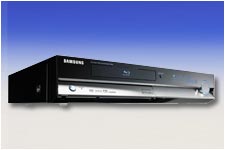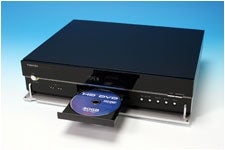Beware: Format war brews over DVD players
The Bankrate promise
At Bankrate we strive to help you make smarter financial decisions. While we adhere to strict , this post may contain references to products from our partners. Here's an explanation for .
Got plans to run out and buy one of those new high-definition DVD players? Better hold on a second.
If you’re one of those people who have to have the latest in home electronics gear, April might hold the key to your video dreams.
That’s when the first high-definition DVD players will start arriving in stores, along with high-definition movies from Hollywood studios that you can buy or rent.
But there’s a turf-war brewing similar to the Beta-VHS battle 25 years ago that you should consider before plunking down your money. The electronics industry is engaged in a turf war over high-definition DVD players that could cost you money if you pick a machine with the wrong format.
For those old enough to remember the 1980s, the issue is exactly the same as the format battle over the first video cassette recorders.
Sony came out with its Betamax VCR, while Panasonic and almost everyone else offered machines in the VHS format. The formats were incompatible, and not even the tapes were interchangeable.
Purists believed that Betamax offered a superior picture, but the format had a limited recording time — about two hours. The VHS picture was more than good enough for most people and it offered about six hours of recording time.
Within a few years, VHS drove Betamax out of the market and those Sony VCRs were suddenly gathering dust in closets of those early buyers.
When it comes to high-definition DVD players, time has been rewound.
Manufacturers are split between two formats: HD DVD and Blu-ray, neither of which is compatible with the other. But unlike the VCR battle, the differences between the two formats are far more subtle — which could make it more difficult to choose.
Both formats will give you spectacular pictures and they both can story your basic movie equally well. The difference comes in data storage capacities.
The HD DVD format has a single layer capacity of 15 gigabytes and a dual layer capacity of 30 gigabytes. The Blu-ray is considerably larger — storing 25 gigabytes on a single layer and 50 gigabytes in its dual-layer capacity, which allows the Blu-ray to hold more of those extra features — such as interviews with the actors, scenes that got cut and production details — that make DVD movies so popular.
Toshiba’s HD-A1 is expected to show up in stores in early April at an expected retail price of $499. Its HD-XA1, which has more playback features, will be priced at $799. The first HD-DVD movie titles will appear about April 15 and are expected to cost about $7 more than a standard DVD.
Samsung’s Blu-ray player will follow a few months later with an estimated launch price of about $1,000. Prices should fall somewhat as machines from Sony and the rest of the Blu-ray group become available later in the year.
Manufacturers, software companies and entertainment conglomerates appear to be siding with the Blu-ray format. Moon-Soo Bang, Samsung’s vice president of planning for digital video systems, says officials from Time Warner have told him the Hollywood studios will back the disk with the larger storage capacity. Those manufacturers using the Blu-ray format include Samsung, Sony, Panasonic, Dell and most of the other major electronics companies.
Toshiba is leading HD DVD format group and has Microsoft, Intel and NEC in its side — but only three movie studios so far.
The battle between these two formats could be decided early — depending on the specific films that are released at the outset.
If HD DVD debuts with big-name popular titles, and if they can pack a variety of extras in, somehow, it might get an early lead that can’t be overtaken even by the larger capacity format. Anyone who builds a sizable film library on one format is going to be reluctant to switch.
But if the quality and name recognition is not there, or if Blu-ray manufacturers minimize or eliminate the price differential, HD DVD could become the Betamax of the new century.
So what’s a home entertainment junkie to do?
This is the time for patience.
By Christmas 2006, a check of your local video rental store should decide matters. If the shelves are packed with movies in one particular high-definition format, then that will point to the machine to buy.
Of course, we can always hope that the industry comes to its senses and offers machines that can play either format.
| PRODUCT COMPARISON | |||||||||||||||||||||||||||||||||||||||||||||||||||||||
|
|||||||||||||||||||||||||||||||||||||||||||||||||||||||
Terry Jackson is the home technology columnist for The Miami Herald.
Related Articles

The right way to give secondhand gifts, according to an etiquette expert



